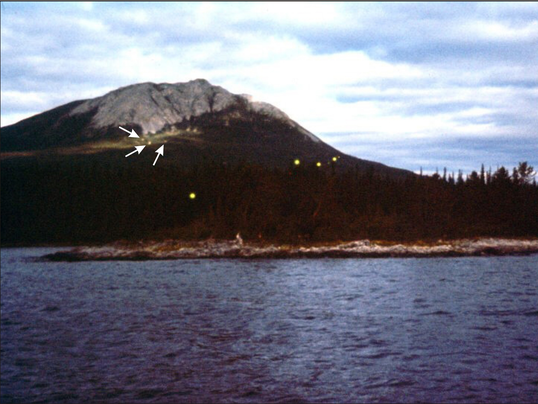 A fossil of a giant marine reptile known as an ichthyosaur may show evidence of the oldest live reptilian birth ever seen, U.S. paleontologists say.
A fossil of a giant marine reptile known as an ichthyosaur may show evidence of the oldest live reptilian birth ever seen, U.S. paleontologists say.
The partial fossil skeleton of an ichthyosaur, giant marine reptiles that evolved from land reptiles and moved to the water, was recovered in China and may show a live birth, Ryosuke Motani from the University of California, Davis, said.
The maternal skeleton was associated with three embryos and neonates: one inside the mother, another exiting the pelvis -- with half the body still inside the mother -- and the third outside of the mother, Motani and colleagues report in the journal PLoS ONE.
Fossil captures moment of live birth in ancient marine reptile
Years of observation of distant galaxy provide dramatic new image
 NASA says its Chandra X-ray Observatory has revisited a galaxy 12 million light years from Earth with a giant jet blasting away from a supermassive black hole.
NASA says its Chandra X-ray Observatory has revisited a galaxy 12 million light years from Earth with a giant jet blasting away from a supermassive black hole.
Just weeks after NASA's Chandra X-ray Observatory began operations in 1999, the telescope pointed at Centaurus A, and has periodically returned its attention to the object, gathering more data each time.
Researchers turn adult cells back into stem cells
 In a step that has implications for stem cell research, human biology and the treatment of disease, researchers in Japan and at Harvard University have managed to turn adult cells back into flexible stem cells without changing their DNA.
In a step that has implications for stem cell research, human biology and the treatment of disease, researchers in Japan and at Harvard University have managed to turn adult cells back into flexible stem cells without changing their DNA.
The researchers discovered that they could put cells in various challenging circumstances – including in acidic solutions and under physical pressure – and turn mature blood cells into cells that were capable of turning into virtually any cell in the body.
Fla. space center home to secret spacecraft

An undisclosed number of workers will recover, refurbish and relaunch the 29-foot-long unmanned spacecraft.
The Air Force launched the most recent flight of the unmanned spacecraft from Florida's Space Coast more than a year ago.
Scientists find records of rare "earthquake lights"
 They've been mistaken for UFOs or dismissed as hallucinations. Now geologists have collected a near-definitive list of a rare but fascinating phenomenon — earthquake lights.
They've been mistaken for UFOs or dismissed as hallucinations. Now geologists have collected a near-definitive list of a rare but fascinating phenomenon — earthquake lights.
Certain types of earthquakes in certain areas can set off blazes of light seconds — sometimes days — ahead of the actual quake. These can manifest themselves as floating balls of light, bluish columns shooting up out of the earth and even reverse lightning, reaching up into the sky from the ground.
Life may have originated miles underground
 New studies suggest the beginnings of life on this planet could have occurred deep underground, the Independent reports.
New studies suggest the beginnings of life on this planet could have occurred deep underground, the Independent reports.
Researchers have found microbes up to 3.1 miles below the Earth's surface — tiny organisms that are almost exactly the same on opposite sides of the planet. That points to a possible common ancestor about 3.5 billion years ago, which is when earthly life began, the paper explains.
Astronomers find strange planet orbiting where there shouldn't be one
 A team of astronomers led by a U.S. graduate student has discovered a planet that shouldn't be where it is, raising questions about how planetary systems form.
A team of astronomers led by a U.S. graduate student has discovered a planet that shouldn't be where it is, raising questions about how planetary systems form.
The giant planet orbiting its star at 650 times the average Earth-sun distance if the most distantly orbiting planet found to date around a single, sun-like star, a University of Arizona release said Thursday.
More Articles...
Page 20 of 61

 Science Glance
Science Glance






























